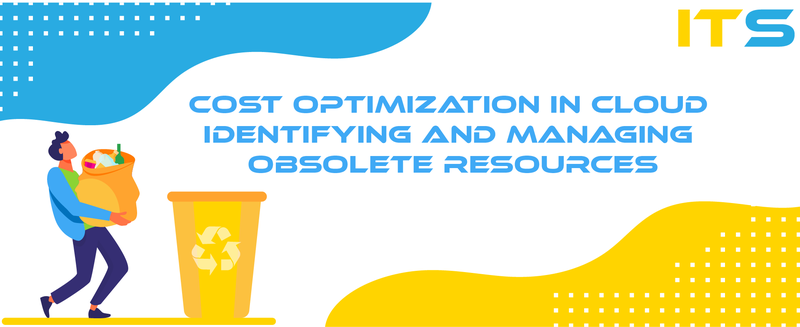Understanding uptime and its importance
Reliability for your application can make a difference in your business in the digital world. Uptime, especially the goal of 99.9%, is a measure of your application's reliability and user availability.
An uptime of such a level will leave your application down for only 8.76 hours throughout the year, which can significantly increase user experience and confidence in your service.
However, Uptime is more than a percentage; it provides insight into the health and reliability of your application. With 24/7 user expectations of the services up and running, the value of maintaining high Uptime must be considered.
All the while, the business would, in turn, lose revenue and trust and eventually lose its reputation. Understanding and appreciating the subtleties of Uptime and its paramount importance to your application's success should take precedence in that long and successful march toward realizing the 99.9% that you dream.
Key components of high availability
Achieving high availability is essential for maintaining 99.9% uptime. This approach involves several key components:
- Use redundant systems and components to ensure that if one part fails, another can take its place without affecting your application's overall availability. Depending on your application, a tool such as K8s or the Auto Scaling service may be helpful. The idea is simple - use only what is needed, and if there is a shortage, the system will automatically scale and be able to withstand a larger load.
- Monitoring: continuously monitor your application and the underlying infrastructure to spot problems early and fix them before they cause downtime. Tools such as Grafana+Prometheus, NewRelic, DataDog, or the native tools of your hosting provider will help you with this challenging task. It is also necessary to remember timely warnings. Strive to ensure that your monitoring system alerts you before an incident occurs and not just during the incident. For example, set up an alert that the disk space is 90% occupied, giving you time to resolve the problem without consequences for end users.
- Scaling: ensure your developed app can support these volumes without experiencing outages during the peak. Understanding that the work must be done in a team is essential. Your developers will need to prepare the application for scaling.
Best practices for infrastructure management
High Uptime rests on a solid foundation of infrastructure management. This runs from the choice of reliable hosting solutions that guarantee high availability to effective load balancing, which will help you spread your traffic equally across the servers. It is, therefore, the underlying bedrock of sustained Uptime through best practice.
- Automation is key: the strategy of automation within every field of software deployment, server provisioning, patches, etc., to reduce human errors and release time for other strategic works by using tools like Terraform, Ansible, or AWS CloudFormation.
- Adopt Infrastructure as Code (IaC): treat your infrastructure as if it were code for applications, managed, and provisioned by code instead of manual processes. It does improve consistency, repeatability, and scalability.
- Regular monitoring and logging: detailed monitoring and logging should be configured over each and every component of the system. Use AWS CloudWatch or Prometheus for monitoring and ELK Stack or Splunk for logging so you can see if there's a problem before it becomes critical.
- Disaster recovery and business continuity planning: ensure that your strategy for backup and recovery is complete, including regular testing of backups and practiced procedures for restoring systems in case of disaster.
- Security and compliance: ensure the network's security, control access, and always encrypt data. Indefinitely audit your infrastructure from the industry's perspective and different types of compliance requirements.
- Performance optimization: regularly review your infrastructure's performance for optimization. Embrace autoscaling to serve your workloads of concern and evaluate cost optimization of your cloud resources.
- Documentation and standardization: implement clear documentation, including the infrastructure and operational procedures. Ensure a consistent environment that is free of inconsistencies for easy maintenance and troubleshooting.
- Continuous learning and improvement: the best practices and cloud technology change so fast. Keep you and your team up-to-date with modern trends and technologies. Training should be a day-to-day habit for your team.
- Feedback loop: establish a feedback mechanism with your users and team members. Utilize such feedback to continuously improve your practices in managing infrastructure.
Streamlining development and deployment processes
Ok, now it’s clearer what direction for architecture was chosen, but I also mentioned some processes that, let’s say, used to lack maturity. The new development team is extremely pedantic when it comes to how its product has to be developed, built, and deployed, what stages for testing and reviews should take place, etc. Thus, reactive manual releases, as they used to be, were abandoned completely. Instead, we developed a robust CI/CD that addresses developers’ workflow in the best way possible.
It might look simple, but it has meaningfully increased the number of feature releases. Now, we have four environments compared to two prior to the changes. A dev environment is a convenient sandbox environment that lets you continue working on new features while a bundle of other features are being tested in QA. Once new features are approved in QA, they are promoted to the staging environment. Think of a staging environment as one that is as close to production as possible. Once staging is approved, a new release can be moved to production. It's a standard yet powerful and flexible workflow with some space for more improvements.
Developing a robust monitoring strategy
How do you make a good strategy for monitoring the early detection of probable problems? - Use real-time monitoring tools to stay in the loop about your application's performance and define key performance indicators that will allow you to catch a problem before it gets bad.
Here are a few rules that you should follow to build robust monitoring:
- Broad coverage: ensure your monitoring system covers every critical facet of your infrastructure. It includes servers, network devices, applications, databases, etc. Every critical service should be under surveillance.
- Metric importance: identify important infrastructure and business processing metrics. The former will include response times and resource utilization, among others, for instance, error rates. Make sure you measure what truly matters.
- Thresholds and alerts: set up thresholds for every metric and have the system raise alerts when those are breached. The system should be able to clearly differentiate between spikes that are temporary and issues that are real.
- Documentation and training: ensure that your team members are well-versed in the monitoring system in use and that they can make decisions about necessary alerts. Good documentation combined with regular training is of great help.
- Recovery: your monitoring system should help detect issues and facilitate quick resolution. Integration with incident management systems can be very beneficial.
- Analyze and report: regular analysis of the monitoring data is essential to observe tendencies and, if not critical, bottlenecks. The reports can help understand how the system performs in the long term.
- Scaling and flexibility: the system should be ready to grow and change with your infrastructure. It is supposed to be flexible and scalable, with the most minor confusion regarding new conditions.
- Interconnectedness with others: the monitoring system should integrate well with other tools and platforms that you are using. Some examples might include CI/CD systems, cloud platforms, and other DevOps tools.
- Testing and validation: ensure the periodic check of the working of your monitoring system, mainly whenever infrastructural changes are made.
- Security: also, your observation system should not ignore security from all forms of access and attacks.
Failover mechanisms
There is one more thing to achieve 99.9% uptime: Failover. In the case of failure, failover mechanisms maintain Uptime as a fundamental component. When things go wrong, automatic Failover can instantly redirect traffic from a failing element to a healthy one. That ensures the service may be quickly restored from a major issue with backup and recovery solutions. If you want to dive deeper into this thim, you can check our article - Load balancers and high volume traffic management

Maintaining security and compliance
Downtime is caused by various factors, from security threats to compliance violations. However, one of the most important steps toward Uptime is to take strong security measures and ensure that your application complies with relevant standards. There are many standards, such as PCI DSS, HIPAA, ISO, SOC, etc. Studying and following these standards will help secure your project and prove your reliability to your end user. Suppose you do not need to undergo this type of accreditation. In that case, you can follow the best security practices of AWS and GCP, which will allow you to build your infrastructure by international standards. For an example, you can refer to the AWS Well-Architected Framework
How to optimize application performance
Optimizing the performance of your application can be the direct factor that contributes to its improved Uptime. Examine ways to optimize and improve efficiency so that outages related to performance can be reduced. Remember the monitoring we talked about a few paragraphs above? He is the one who will help you analyze and identify weak points. Also, keeping an incident journal in which you describe all the incidents that occurred in the past will help you make the right decision. Оne thing to fix an error; another thing to act proactively and fix the cause of that error. You must look back and analyze your past performance to achieve a targeted result.
Achieving 99.9% uptime: a step-by-step guide
The best recipe for getting 99.9% uptime combines what has been outlined above in a practical guide. Following this guide in an assured manner would mean approaching the challenge of high availability with confidence.
Remember, there is no magic pill or tool that will help your application be online 24x7. The question here is more about whether your team follows best practices and does everything possible to prevent an emergency. When the incident has already occurred, it is already too late; the clock is ticking, and with every minute, you move away from your desired result in 99.9% uptime. It is also important to understand that achieving this result does not depend on a single team, be it developers, devops engineers, or QA; the result lies in teamwork.
In this article, you have learned many useful practices that you should use, but if you need help implementing them, do not hesitate to contact us. The ITSyndicate team is ready to achieve the desired result.
Discover how our services can benefit your business. Leave your contact information and our team will reach out to provide you with detailed information tailored to your specific needs. Take the next step towards achieving your business goals.
How AI and DevOps are transforming software development, addressing new challenges in autonomy and ethics
The article discusses overcoming challenges in cloud infrastructure development for a FinTech startup with limited regional options and strict regulations
The article addresses the role of DevOps engineers in optimizing legacy cloud resources to improve efficiency and cut costs in …





